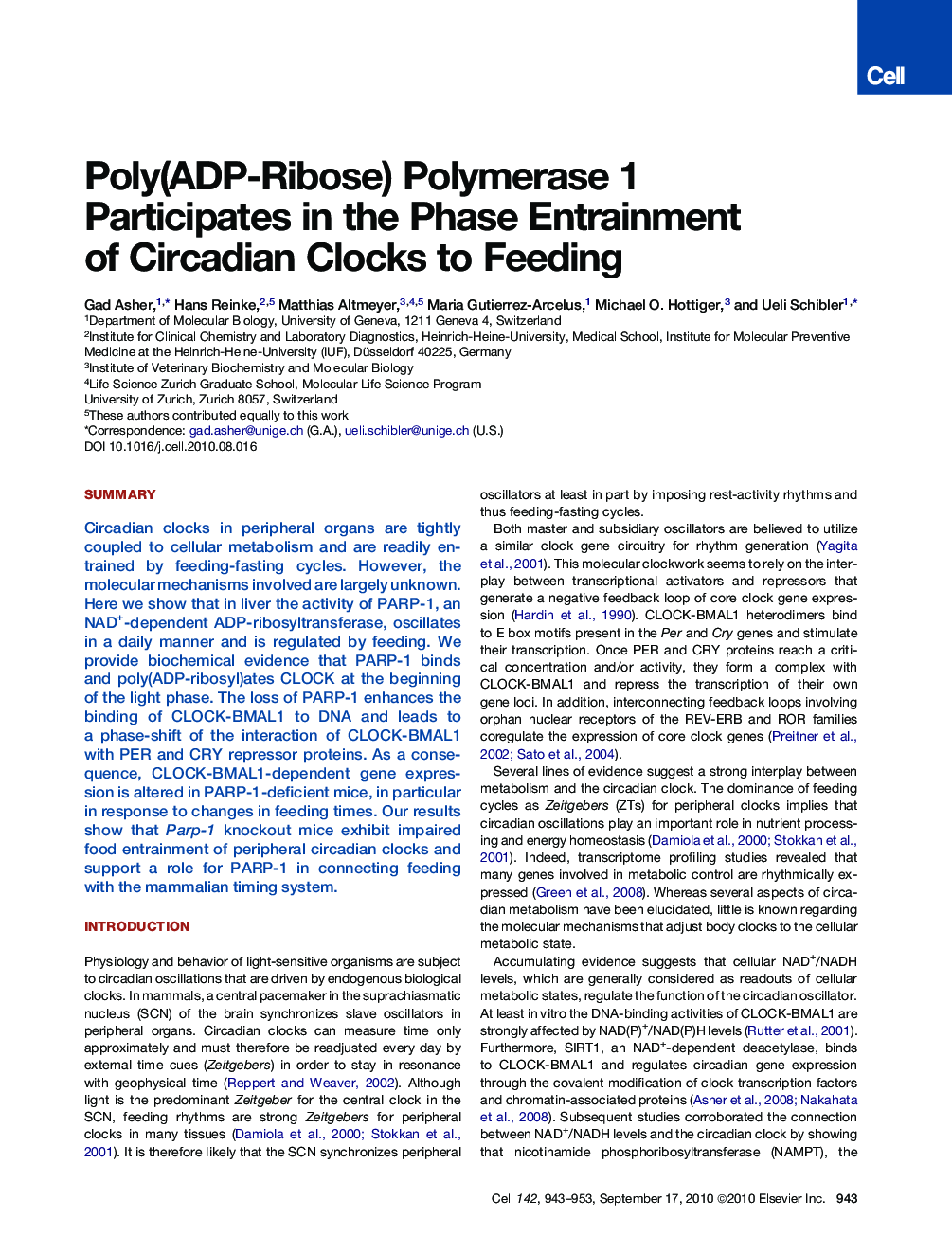| Article ID | Journal | Published Year | Pages | File Type |
|---|---|---|---|---|
| 2036674 | Cell | 2010 | 11 Pages |
SummaryCircadian clocks in peripheral organs are tightly coupled to cellular metabolism and are readily entrained by feeding-fasting cycles. However, the molecular mechanisms involved are largely unknown. Here we show that in liver the activity of PARP-1, an NAD+-dependent ADP-ribosyltransferase, oscillates in a daily manner and is regulated by feeding. We provide biochemical evidence that PARP-1 binds and poly(ADP-ribosyl)ates CLOCK at the beginning of the light phase. The loss of PARP-1 enhances the binding of CLOCK-BMAL1 to DNA and leads to a phase-shift of the interaction of CLOCK-BMAL1 with PER and CRY repressor proteins. As a consequence, CLOCK-BMAL1-dependent gene expression is altered in PARP-1-deficient mice, in particular in response to changes in feeding times. Our results show that Parp-1 knockout mice exhibit impaired food entrainment of peripheral circadian clocks and support a role for PARP-1 in connecting feeding with the mammalian timing system.PaperFlick To view the video inline, enable JavaScript on your browser. However, you can download and view the video by clicking on the icon belowHelp with MP4 filesOptionsDownload video (26891 K)
Graphical AbstractFigure optionsDownload full-size imageDownload high-quality image (204 K)Download as PowerPoint slideHighlights► PARP-1 activity in mouse liver is circadian and regulated by feeding ► PARP-1 poly(ADP-ribosyl)ates CLOCK and modulates CLOCK-BMAL1 function ► CLOCK-BMAL1-dependent gene expression is altered in PARP-1-deficient mice ► Food entrainment of peripheral circadian clocks is impaired in Parp-1 knockout mice
